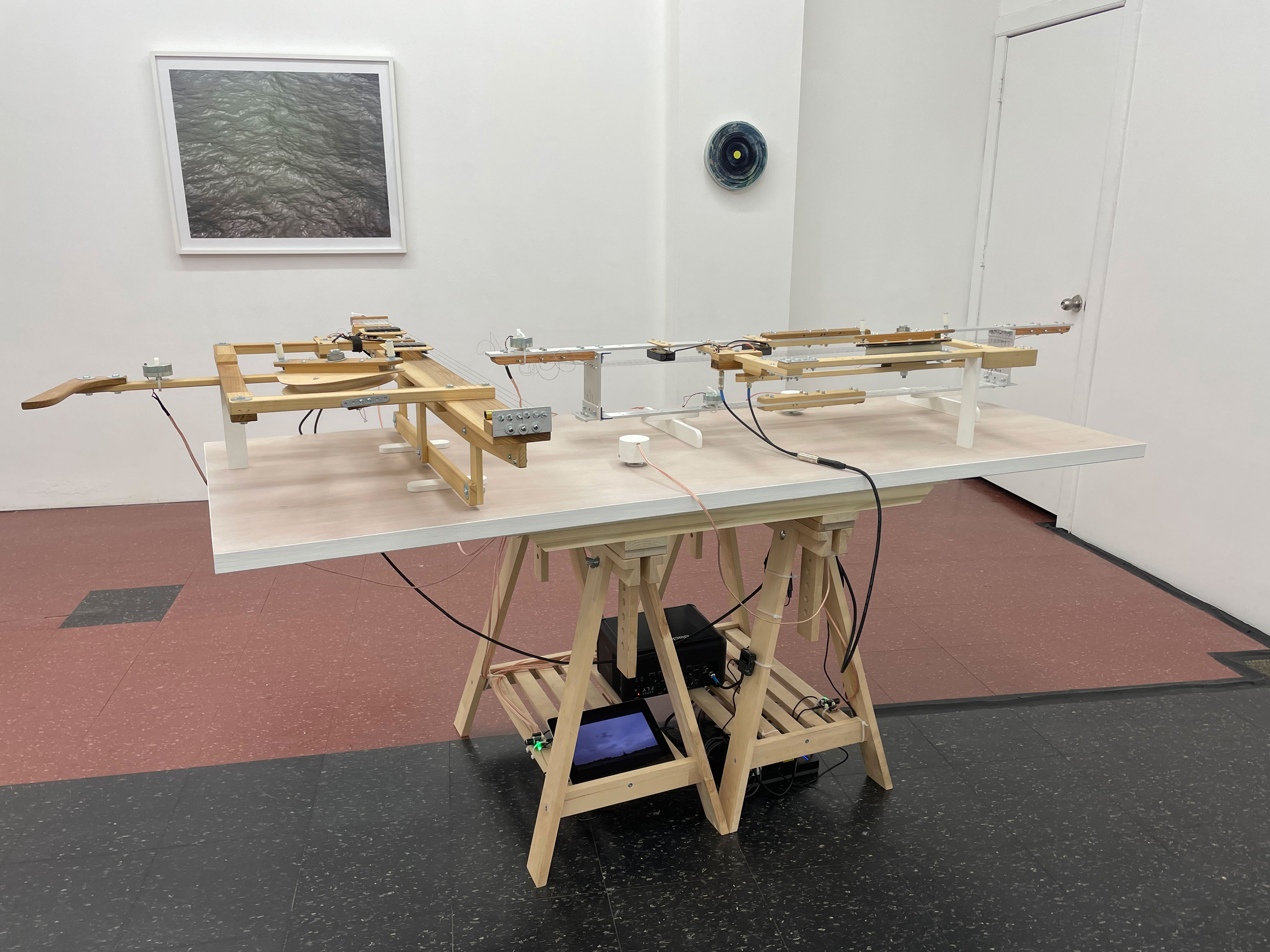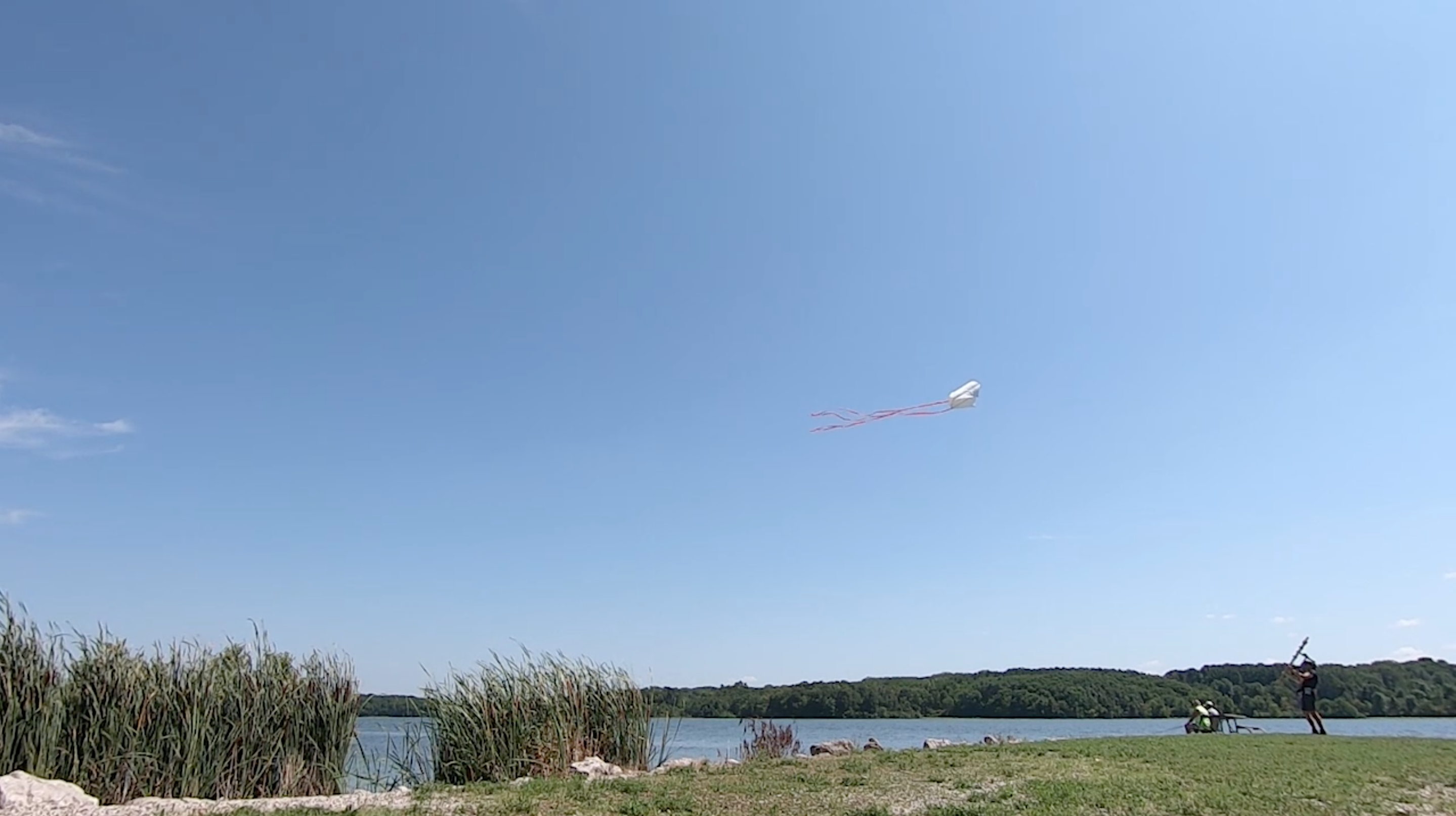
Kite Choir
The Kite Choir is an ensemble of custom-made kites and sound instruments that builds upon traditions of singing kites. The sound instruments in these existing traditions are carried aloft by the kites they are attached to, as the voice-box of an assemblage brought to life by the wind. The Kite Choir instead utilizes the reel and entire tow-line of the kite as the sites of instrumentation, to promote a collaborative chain of agency between atmosphere and pilot/performer. It functions as a regime of perception, an aesthetic practice of attunement with the atmosphere.
The instruments developed so far include ribbon tow-lines attached to contact mics and portable mini-amps; tin-can resonator reels; acoustic and electric “hurdy-gurdy” reels of various sizes and materials. The score for the choir, written by the electroacoustic musician and composer Paula Matthusen, provides a set of instructions contingent upon varying aeolian, climatic, temporal, and psychological conditions. This score is printed as decks of “playing cards,” based on flag signaling systems. The videos below are some of the “soundings” in the ongoing development of the project, and more can be found at the links at the bottom of the page.

Ribbon Reels
Polyester ribbon, brass/aluminum/wood/steel plates, piezoelectric pickups, recorder or preamp +/- miniamp. 2019-2021.





Kite Choir Sounding: May 10, 2019, Seydisfjordur (excerpt). Brass Plate Ribbon Reel.
Hurdy-Gurdy Reels
Rosined fishing line, modified fishing reel, guitar string or music wire, wood frames, made and found soundboxes +/- piezoelectric or electromagnetic pickups, and mini-amps. 2018-2020.



























The various types of instruments in the Kite Choir are situated between two poles, neither allowing the human a sense of autonomous expression nor letting them off the hook with a passive “listening device”. The instruments with the most complex behavior so far are the “hurdy-gurdy reels”. In this family of instruments, the kite’s tow line is nylon monofilament coated with rosin, which makes it slightly sticky. As it is reeled in and out, this tow line bows a set of six musical strings, arranged low to high from reel to kite.
The strings are played open - without fingering - in alternating pull and release. The lowest string can be played alone, or one can incrementally contact more of the strings by varying the angle of the instrument in relation to the kite. Things get more interesting as the line extends further into the sky.





The kite should have just enough lift to fly. No running is necessary. The sound is not about actions – of flying or falling, pulling, playing, or bowing - but about finding durations of suspension in the air. When the line is in a tensioned curve, reeling the line in and out can be akin to breathing. Without the kite pulling up or the pilot pulling down, the two become momentary counterweights, suspended from each other. The sound of that state of suspension is when nothing seems to be happening at all, even though all the lines are vibrating. The sense is not of broadcasting sound out into an environment, but of immersing oneself in the air as if diving into an ocean.
Resonator Reels
Fishing line, fishing reels modified with rosined acrylic lip, wood bridges, found resonators +/- piezoelectric pickups. 2018.

Kite Choir Sounding: June 11, 2019. Seyðisfjörður, Iceland. Double cookie can resonator reels.
Kite Choir Score
The Kite Choir score, by Paula Matthusen, provides sets of variable instructions based on climatic, aeolian, temporal, and psychological conditions. The score is printed as a deck of playing cards, designed and fabricated by Kaitlin McCoy.

One way this practice impacts daily life is through its effects on time, or schedule. One cannot choose the how of performance independently of the where and when. As a fisherman, farmer, or surfer would know, one is subject to the weather. The phrase, “weather permitting”, states a limitation but can also serve as a license.
One learns to see the ground and its features – buildings, hills, trees, bodies of water – in terms of the wind. The place is the real body of the instrument. Over the course of this practice, a light breeze in a Venetian alley allowed the first overtones to emerge; in Seyðisfjörður, a failed collaboration with an existing sound sculpture precipitated various tunings, and the joy of flying in fog; while in the textured, gusty winds of Iowa, the static charge of approaching thunderstorms became audible.
Excerpts of Kite Choir Soundings
Rodeo Beach, California (Headlands Center for the Arts)
The Kite Choir has been supported by residencies at the Headlands Center for the Arts, in California; Sculpture Space, in New York; Heima, in Seyðisfjörður, Iceland; the 20 Artists / 20 Parks Initiative by Iowa Arts Council and Department of Natural Resources; the Daniel J. Huberty Faculty Fellowship from the Department of Architecture, and a Research Grant from the Center for Excellence in the Arts and Humanities at Iowa State University.

